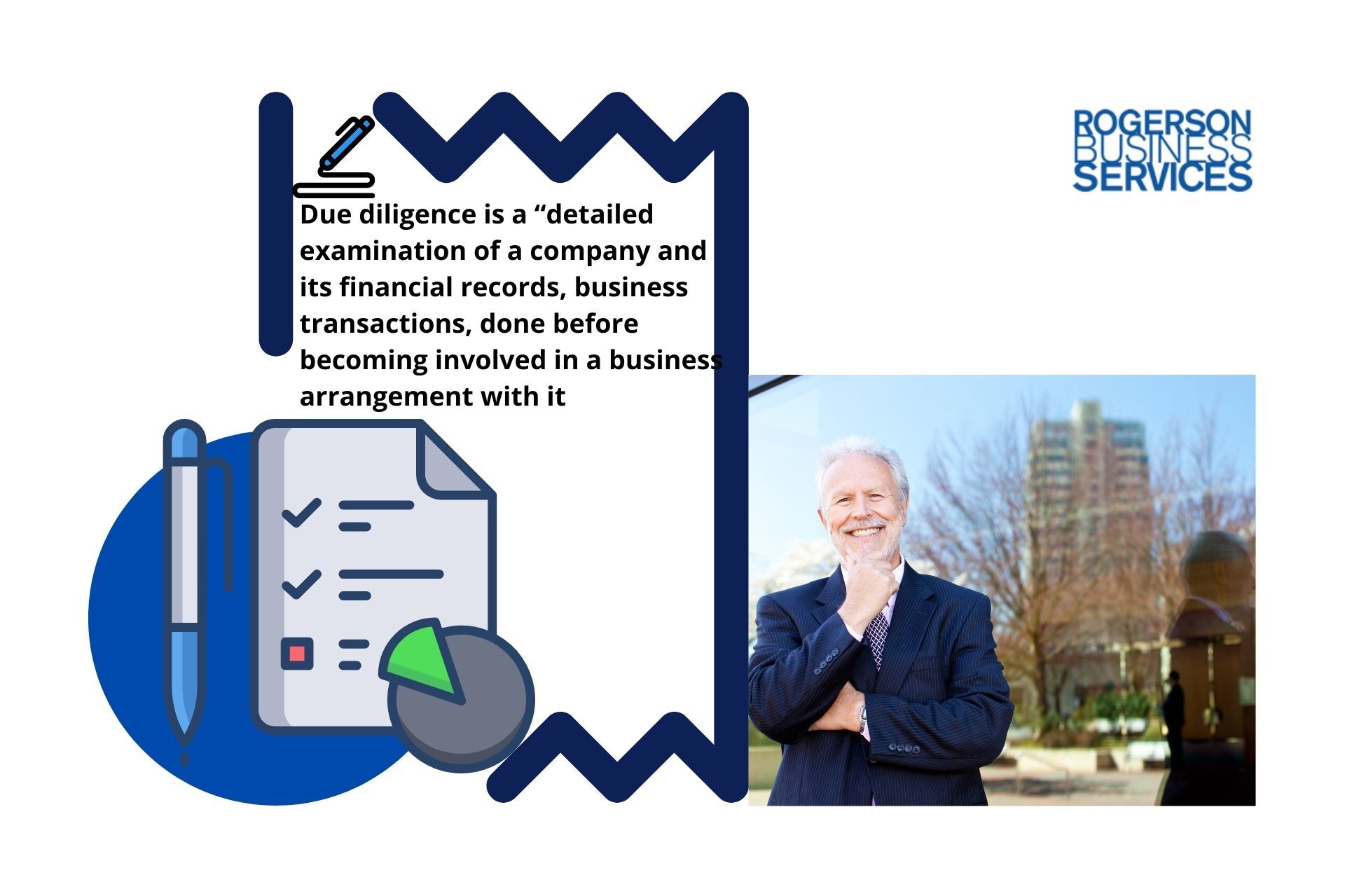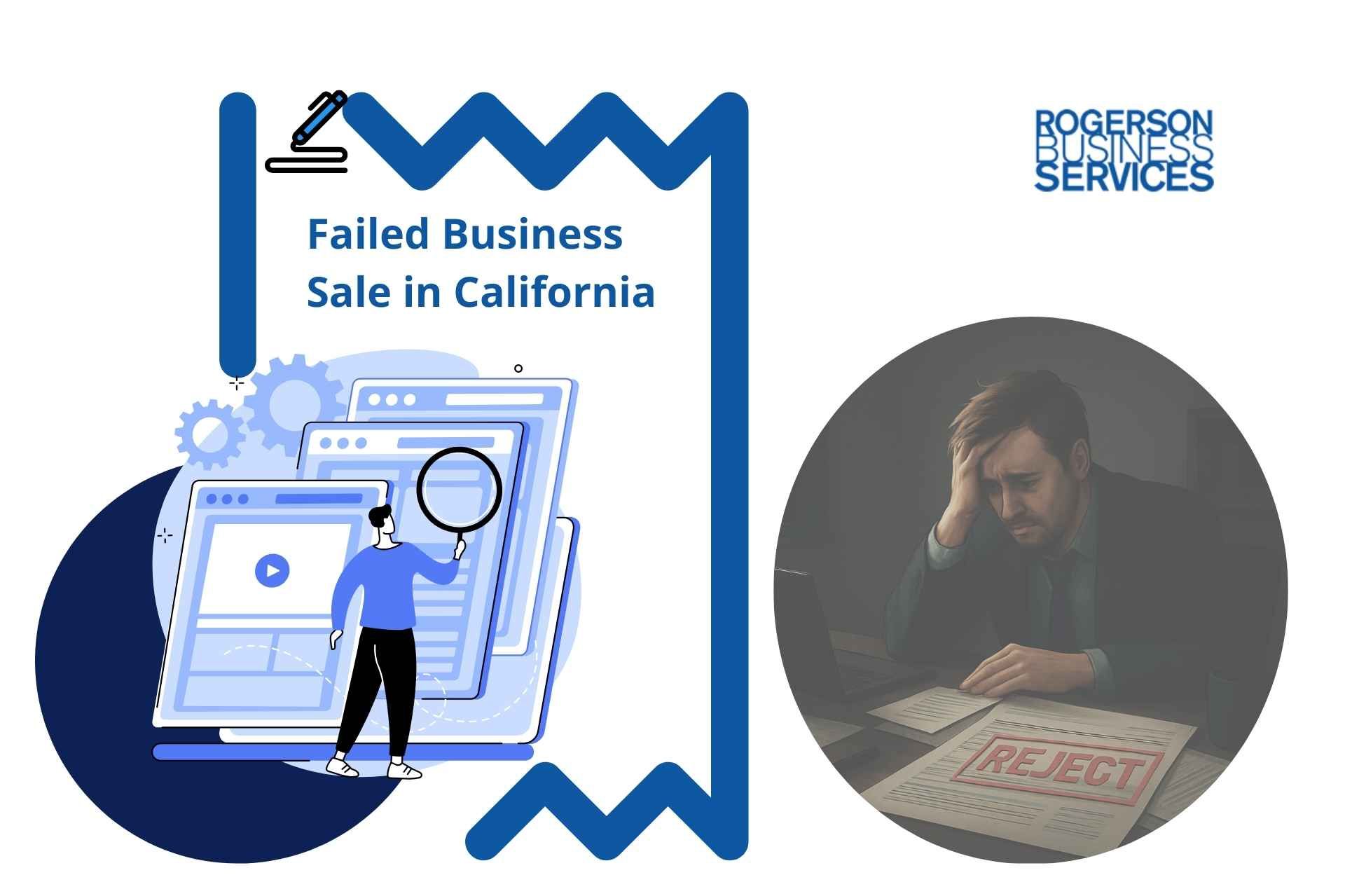What Is Due Diligence (The Ultimate Guide)
What Is Due Diligence?

When someone engages in an activity with due diligence, it simply means they are doing it with caution and care. The due diligence covered in our guide is for business owners, specifically baby boomer business owners, looking to value and sell their middle-market business in California.
Since selling and buying or investing in a business is risky, no matter the business, it’s crucial to sell or buy with due diligence. In this ultimate guide, we’ll discuss the sell-side of due diligence, the buy-side of due diligence, the benefits of due diligence for both parties, and the transcripts needed to fulfill due diligence.
Due Diligence Meaning
From the sell-side, due diligence is the process of compiling various applicable information during a merger or acquisition (M&A) of a business. To elaborate, due diligence is a “detailed examination of a company and its financial records, business transactions, done before becoming involved in a business arrangement with it,” according to the Cambridge Dictionary.
During a merger or acquisition, due diligence ensures both sides have the correct information, know the risks, and are legally compliant. The seller’s due diligence information aids in both sides agreeing on a fair price for sale.
Example of Due Diligence
Preparing for an M&A is the best way for the seller to limit the chances of being blindsided by the buyer. At the same time, the buyer wants to avoid overpaying for a failing business. Luckily, full disclosure by the buyer can limit the chances of overpaying.
The sell-side M&A due diligence process typically requires four to eight months to complete, as it consists of four stages: pre-launch, marketing, bidding rounds, and closing.
The buy-side M&A consists of four stages: engagement, preliminary due diligence, letter of intent, and final negotiations. As the buyer, from the engagement stage to the confirmed sale of a business, the process requires around six to eight months or more to finalize.
To further illustrate the two sides of M&A due diligence, here are two examples.
1. Sell-Side M&A
Scenario: A baby boomer business owner wants to value and sell their middle-market business in California.
Sell-Side Due Diligence Process:
First, the California business owner will prepare their business for sale by discussing goals, objectives, obstacles, and potential buyers and compiling financial documents. The first stage essentially includes preparing the business for a buyer or investor to thoroughly evaluate.
After the preparation stage, the business owner focuses on marketing their business to potential buyers. No matter the method of marketing, the business owner should have a finalized list of buyers.
Stage three, bidding rounds, or selecting the buyer, requires the business owner to evaluate the deal and the buyer's financial capabilities and meet to finalize the necessary conditions. By the end of this stage, the California business owner should have their future buyer in mind.
In the final stage of the sell-side M&A due diligence, the owner has organized, discussed, and arranged everything necessary to finalize the deal in escrow. While further negotiation may happen, either way, the owner is assisting through the process to ensure the transaction is promptly completed.
2. Buy-Side M&A
Scenario: A wealthy investor wants to acquire a business, but they need access to the true worth of their targeted business.
Buy-Side Due Diligence Process:
The first step for the investor is to engage with the California business owner. They could reach out directly or have a third party. The third-party dealer could be an investment banker. The investment banker would be responsible for contact with the appropriate owner. Once interest is established, both parties will likely submit a confidentiality agreement (CA).
Next, in the preliminary stage, the negotiations commence. Depending on the number of interested parties, the seller could engage in an auction-like process. In addition, the second phase includes the buyer's opportunity to review their target’s due diligence records to confirm their interest in the company.
If everything goes well, the investor can write a letter of intent, a non-binding offering to the seller about their readiness to buy or invest in their company. If the seller confirms the buyer’s letter of intent, the buyer is privileged to exclusive data and transactions of the company.
If everything goes according to plan, the buyer, seller, and, most likely, some lawyers complete the transaction as they see fit.
Sell-Side Due Diligence
Here are some of the best practices for each step of due diligence for the sell-side based on Deloitte, a British multinational professional services company.
Pre-launch
- Set goal and objective
- Evaluate issues that could stop a sale
- Assist and prepare a detailed analysis of past, current, and future finances
- Have a stable business model
- Review all data
- Create an executive summary
Marketing
- Direct call potential buyers
- Provide information on the business to interested parties
- Analyze the list of potential buyers and/or investors
- Compile a finalized list of potential buyers
- A mid-market business should promote its relationship with its vendors and/or suppliers
Bidding Rounds
- Read letters of interest sent by prospective buyers
- Decide price, payment method, buyer and/or investor conditions
- Evaluate finances of interested parties
- Assist in creating labor business case
- Begin negotiations
Closing
- Assist in the final sale
- Contribute to negotiation and other factors in the sale
- Continue to prepare information for labor negotiations
- Ensure all documents and obligations are complete
Buy-Side Due Diligence
Here are some of the best practices for each step of due diligence for the buy-side, based on RKJ PARTNERS, LLC.
As noted above, the buy-side consists of four stages: engagement, preliminary due diligence, letter of intent, and final negotiations.
Engagement
- Build a relationship with the targeted business
- Have noble motivations for acquiring their business
- Ensure the business matches your needs like location, industry, revenue, growth
Preliminary
- Attempt to understand the target and any issues
- Obtain as much information on key executives and the business as possible
- Review downward trends in areas of the company, like sales
- Look over the company's financials and predicted growth
Letter of Intent
- Compare the target company with others operating in the same industry.
- If the target company has unpaid debt, loans, etc., assess if the monetary burden will transfer to the buyer.
- Value the business adjusted net value.
- The letter of intent should include maximization of value to target shareholders, consummation date agreement, purchase price amount, possible tax consequences associated with the transaction, a set time limit for the buyer to complete, and intentions regarding the business.
Final Negotiations
- Discuss the method of payment.
- Set up a secure and stable way to complete the transaction
- Provide evidence to the seller of financial competence
- Acquire a team of due diligence experts to review the entity's financials.
Lastly, as the buyer, consider hiring experienced advisors and legal consultation to address issues that may arise during the sale.
Sell-Side Due Diligence Checklist
As the owner of a lower mid-market company looking to sell your business to retire, you may lack experience in M&A, and that’s okay because here is the ultimate sell-side due diligence checklist to help.
- 12-month financial performance (TTM)
- Accounts receivable aging
- Accruals and contingencies
- Allowance for bad debts
- Bad debt expense
- Bank statements for the current period
- Business Summary (general information about business)
- Capacity utilization and overhead allocation
- Cost accounting policy
- Costs of goods and vendors
- Credit collection
- Customer revenue
- Employee liabilities, i.e., healthcare, sick pay, retirement
- Implicit or explicit guarantees
- Income taxes
- Inventory adjustments
- Inventory policy
- Leases
- Legal entity chart
- List of hedges/forward contacts
- List of major suppliers
- Loans
- Obsolescence observe
- Other documents related to receivables and inventory
- Pending litigation
- Property, company assets, etc.
- Recent audit and finance statements
- Revenue, customers, business operations
- Write-offs, allowance
Indeed, it’s a long list of records needed just to sell a lower mid-market company. However, it’s important to note that the sell-side M&A due diligence checklist above will change depending on the industry.
For example, if your business isn’t attached to any loans, feel free to ignore that box.
M&A Due Diligence Checklist
Now, for those buy-side due diligence checklists, here is the ultimate M&A due diligence checklist. The records and documents listed in the M&A due diligence checklist are required by the buyer, investor, and seller.
- Addresses of headquarters, additional property, real estate papers, lease agreements, etc.
- Articles of Incorporation and articles of organization for both parties
- Audited and unaudited financial statement copies
- Biography for board members, shareholders, and important employees
- Budget with projections
- Bylaws, Operating LLC agreements
- Compliance program copies and a summary of asset restrictions
- Comprehensive list of assets, liabilities, financial obligations, and other liabilities not on financial statements
- Copies of insurance claims and policies
- Copies of local, state, and federal tax returns
- Documents of shares, private equity, equity rights, outstanding debt instruments, etc.
- Legal documents, like contracts, material litigation documents, business licenses, and permits
- List of patents, domains, trademarks, and websites
- Notarized copies of tax allocation agreements
- Summary of capital expenditure projects
- Summary of intellectual property internal and external of a business
- Summary of property taxes, deferred tax audits, and liabilities
- Summary of sale and lease transactions and international activities
- Tax audits from the last five years
Tip: If you want to go all the way with maximizing your due diligence, don't settle without a forensic accounting due diligence.
Buy-Side vs. Sell-Side Due Diligence
As we’ve discussed, the clearest difference between buy-side due diligence and sell-side due diligence is that one side is selling their business, and the other is buying. Due diligence during an M&A exposes both sides' financial means, which limits the risk of investing in a failing company.
While buyers can make better decisions with nearly every single record the business has, it also benefits the seller. For example, the seller can ask for a fair market price for their business, identify and fix issues they otherwise wouldn’t have noticed, and save time without worrying about making a deal that is less than your business deserves.
However, the multitude of documents asked for in buying and selling make due diligence extremely taxing. This is why many business owners planning to sell their business meet with an experienced M&A advisor to guide them through the process.
The difficulties of sell-side due diligence are compiling all the records together and getting the highest price possible for their business. However, successful due diligence allows business owners to see issues within their company, so they can fix them before engaging with potential buyers.
Sellers must be aware by preparing their due diligence to avoid being blindsided.
It’s important to note that for baby boomer business owners who want to value and sell their middle-market business in California, hiring sell-side advisors may be necessary if you’re dealing with an experienced buyer.
Buy-Side and Sell-Side Due Diligence Tips
The buy-side, sell-side relationship operates with both parties attempting to leverage the other party, with one trying to get the highest offer and the other the opposite. The way the seller can keep the price at their desired level is by keeping competition high. To elaborate, if there are many prospective, high-bidding buyers wanting to buy or invest in their company.
Keeping a competitive environment in the marketing and bidding stages should be the seller’s goal.
On the contrary, once a buyer officially commits to purchasing the company, the negotiation power is now in their hands. So, the buyer should try their hardest to eliminate the competition to obtain control of the negotiations.
One way the seller can shut down attempts by the buyer to limit competition is through full disclosure. In other words, the seller should complete their due diligence to share with the acquirer.
Lastly, one strategy both parties should understand in the M&A process is both sides must work to understand the motivations of one another. Understanding buyer and seller motivations can help maximize the selling price for the seller and minimize the final sale risk for the buyer.
See case studies
Final Thoughts
Hopefully, after reading our ultimate guide on buy and sell due diligence, you now have a good idea about the benefits of due diligence for both parties, the records needed to fulfill due diligence, and tips to mitigate risks involving an M&A transaction.
Finally, although not required, business owners need to consult an M&A advisor to learn the best practices and receive their desired sale price for the transaction.
If you have decided to value and then sell your lower middle market business now or within the next six to twelve months in California, click here to get started with this quick and simple form, or call Andrew Rogerson, Certified M&A Advisor, so we can understand your pain points better and prioritize your inquiry with Rogerson Business Services, RBS Advisors.
This is part of business owner tips to answer how Rogerson Business Services attract qualified buyers to sell your business series ->
Hey there! Can we send you a gift?
We just wanted to say hi and thanks for stopping by our little corner of the web. :) we'd love to offer you a cup of coffee/tea, but, alas, this is the Internet.
However, we think you'll love our email newsletter about building value and properly position your company before transition/exit your business ownership.
As a special welcome gift for subscribing, you'll also get our helping and educational guides, tips, tutorials, etc.. for free.
It's filled with the best practices for retiring serial business owners like Dan Gilbert, Larry Ellison, Warren Buffett, and many more.
Just sign up for our emails below.


